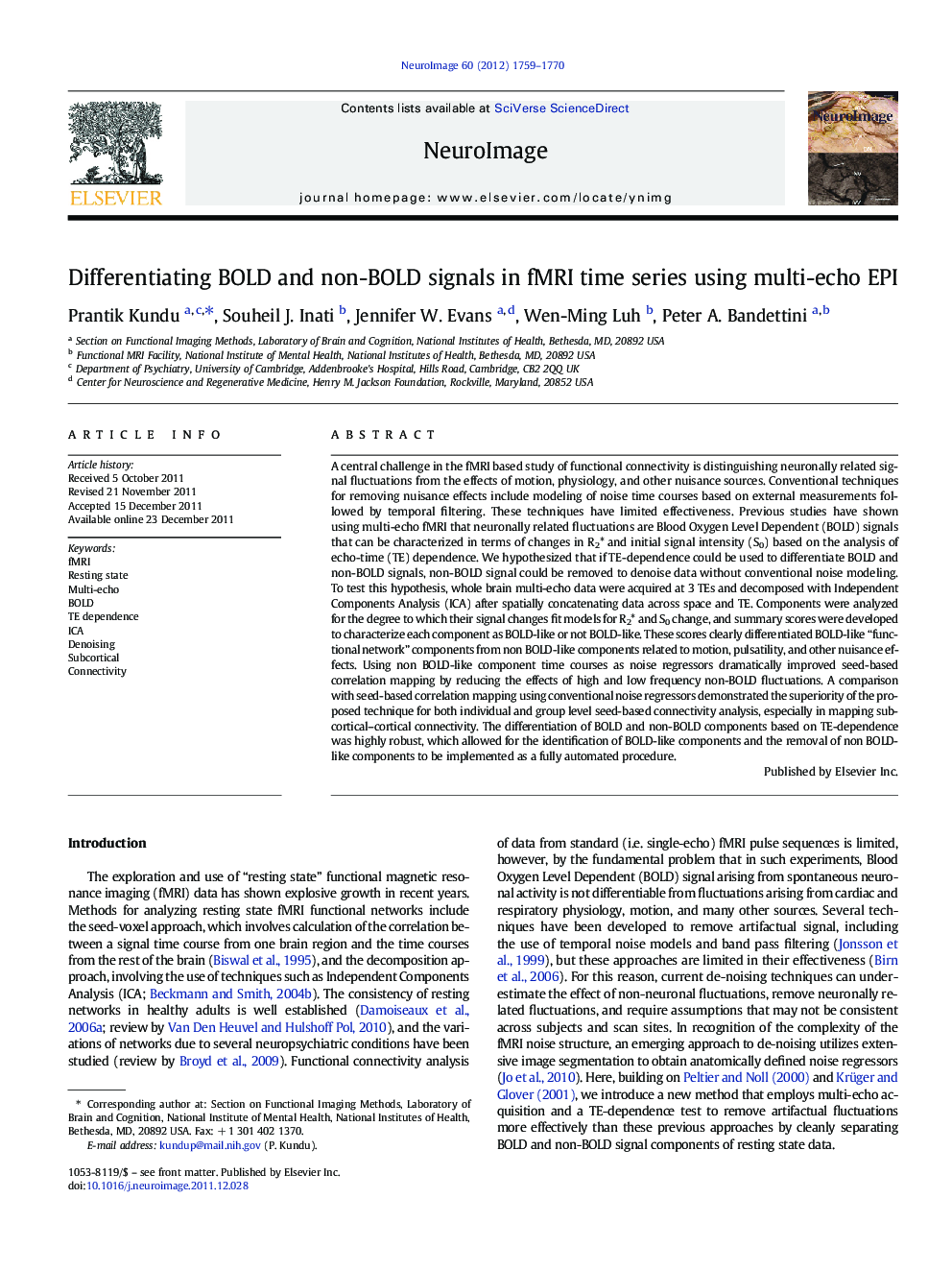| کد مقاله | کد نشریه | سال انتشار | مقاله انگلیسی | نسخه تمام متن |
|---|---|---|---|---|
| 6031981 | 1188737 | 2012 | 12 صفحه PDF | دانلود رایگان |

A central challenge in the fMRI based study of functional connectivity is distinguishing neuronally related signal fluctuations from the effects of motion, physiology, and other nuisance sources. Conventional techniques for removing nuisance effects include modeling of noise time courses based on external measurements followed by temporal filtering. These techniques have limited effectiveness. Previous studies have shown using multi-echo fMRI that neuronally related fluctuations are Blood Oxygen Level Dependent (BOLD) signals that can be characterized in terms of changes in R2* and initial signal intensity (S0) based on the analysis of echo-time (TE) dependence. We hypothesized that if TE-dependence could be used to differentiate BOLD and non-BOLD signals, non-BOLD signal could be removed to denoise data without conventional noise modeling. To test this hypothesis, whole brain multi-echo data were acquired at 3 TEs and decomposed with Independent Components Analysis (ICA) after spatially concatenating data across space and TE. Components were analyzed for the degree to which their signal changes fit models for R2* and S0 change, and summary scores were developed to characterize each component as BOLD-like or not BOLD-like. These scores clearly differentiated BOLD-like “functional network” components from non BOLD-like components related to motion, pulsatility, and other nuisance effects. Using non BOLD-like component time courses as noise regressors dramatically improved seed-based correlation mapping by reducing the effects of high and low frequency non-BOLD fluctuations. A comparison with seed-based correlation mapping using conventional noise regressors demonstrated the superiority of the proposed technique for both individual and group level seed-based connectivity analysis, especially in mapping subcortical-cortical connectivity. The differentiation of BOLD and non-BOLD components based on TE-dependence was highly robust, which allowed for the identification of BOLD-like components and the removal of non BOLD-like components to be implemented as a fully automated procedure.
122Highlights⺠ICA components were analyzed for TE-dependence. ⺠Component-level TE-dependence scores identified BOLD components. ⺠BOLD networks were identified without spatial templates or frequency thresholds. ⺠Removing non-BOLD components dramatically denoised data. ⺠Robust subcortical-cortical connectivity was revealed after denoising.
Journal: NeuroImage - Volume 60, Issue 3, 15 April 2012, Pages 1759-1770